We hear a lot of folks saying that certain guitars were designed with a certain set of strings in mind—flatwound .012s on a Jazzmaster, Phosphor .011s on a Taylor, etc, etc. Today we try to make sense of all this talk and see if there’s any legitimacy behind it.
Be sure to subscribe to our YouTube channel to keep up with more great videos like this one.
Today we’re talking about whether or not certain guitars are meant for a certain gauge of strings, what it means when you hear that in different places, whether it’s ever the case, whether it never really matters, et cetera, et cetera.
So there’s a couple of different circumstances in which people will talk about how their guitar or a guitar is only meant for a certain gauge, alloy or type of string. We’re going to talk about each of those today and whether or not I think they’re valid. This is basically my opinion so you’re kind of going with what I think here. Certainly, if you think that your guitar is just meant for a certain gauge of string, maybe you’re right, who knows. But let’s talk about it.
“But Jazzmasters were designed for flatwounds…”
The first circumstance I hear pretty often is where people are talking about how a particular guitar was perhaps designed with a certain set of strings in mind and how it can’t really work with any other. The one that comes to mind the most is that you do hear some people talk about how Jazzmasters and Jaguars were just designed for flatwound strings—they won’t work with any other type of strings, it’s just not the same thing.
Now, while I’ll admit that it’s very possible that a flatwound string might work well in a Jazzmaster or a Jaguar, I don’t think it’s fair to say that they were made for these strings, and as such, no other strings will work for them. For one, back when those guitars were designed, people were using roundwound and flatwound strings, I know that Jazzmasters were initially meant to be guitars for jazz players—so they probably factored in that they might be using flatwound strings—but that doesn’t mean that those are the only strings that would work on them.
The second thing that I think that is most telling about something like this, is the fact that most all guitars were designed in the first place back in a period in which people were playing really, really heavy strings—like really heavy—like 14 to 60 or something like that. So to a certain point, all guitars were kind of designed with that in mind. So I think it’s a little bit weird to cherry pick and say that a given guitar was just designed for flatwounds or originally designed for really heavy gauge strings, when in truth, kind of all guitars were—and they generally work just fine with things like 10s or nines or 11s or what have you. So I think it mostly isn’t a really valid critique to say that Jazzmasters just have to be played with flatwounds.
Now, all that said, I do have certain preferences and opinions about what I think works well on certain guitars. Jazzmasters, for example, I really love a set of 11s on—9s kind of feel a little bit weird to me on there. 10s are all right, 12s get to be a little bit too much. But that’s a little bit more about how I want to accentuate or avoid different things about the Jazzmaster that are great or negative and that just really varies on who you are and what you’re looking to make your guitar do.
For one player the boominess of a Les Paul might be something they want to accentuate and really just totally dive into, and for other people, they might really dislike that and want to go with a little bit of a thinner gauge string or a stainless steel alloy or something like that to get it to sound a little bit less boomy and bottom heavy and “Les Paul-y”.
That is all to say I don’t personally buy this critique.
“But [brand] only recommends I use their .012s…”
The second and probably most common circumstance in which people will talk about guitars having been meant for a given gauge of strings is when you’re getting that information from the manufacturer themselves or the manufacturer will say this guitar was set up for a given gauge of string and that’s what we recommend using on it.
Now, for whatever reason, I don’t hear this critique from electric players all that often. I think that’s probably because most electric guitars are set up for 9s from the factory and pretty much every electric guitarist that I know, with certain exceptions, immediately gets a guitar, if it’s new, with 9s on it and swaps them out for 10s or 11s or whatever. So I think electric players are more just used to the idea that they’re going to have to put different strings on their guitar and maybe adjust a few things to make it work just right.
The place that I do see this come up a lot is with acoustic guitarists. I hear from a lot of acoustic guitarists that will say, Taylor or Martin or whoever recommends only this gauge set of string for my guitar and so that’s the only gauge set I can use.
So, ultimately this isn’t too much of a different thing with acoustic guitars than it is with electric guitars even though acoustic guitarists, I think, are a little bit more sensitive to it. Any acoustic guitar can work for a variety of gauges. They’re certainly well rated for anything from 10s to 13s or probably even 14s in many cases without having any trouble. The things that are going to always change are just things that the factory set up in the first place.
On electric guitars, intonation at the bridge is one of the first things that’s going to change if you do change your gauge, especially if you change it quite a bit. If you go from 9s to 9.5s, it’s probably not a huge deal. If you go from 9s to 11s, you’ll probably need to turn some screws a little bit to get everything to intonate just right.
The second aspect with electric guitars is things like the springs in your tremolo system. If you have a hard tail guitar, this isn’t an issue at all. But if you do have a trem system there is like a certain point at which the gauges can be too much, so that is one thing to keep an eye on.
And the other place you’re going to want to keep an eye on when changing string gauge is your guitar’s nut. A lot of companies like to cut nut slots super, super tight. It’s actually like a huge pet peeve of mine when it comes to buying a new guitar. Every electric guitar company seems to love cutting their nut slots for 9s even though that’s what hardly anybody plays and you have to do work on it to get a set of 11s or 10s to work well on it which I think is kind of silly. But, the same thing is true for electric guitars or acoustic guitars, you might have to widen your nut slot just a little bit to get it to accommodate the gauge of strings you’re most comfortable with. That’s totally fine, even if you go back down in gauge a little bit after that, they’re going to work just fine in those nut slots.
Ultimately just because Taylor or Fender or whoever says that there is a certain gauge they recommend for their guitar, doesn’t mean you can’t use a different gauge of string at all. It doesn’t even mean that the majority of players that own that guitar use that particular string. It just means you might, at the front end, have to do a little of intonation set up or a little bit of nut set up, or both, or maybe not at all—just depending on how that guitar was set up.
“But that’s what I like…”
So the third and final instance in which I will hear players talk about how a given guitar is meant for a given set of strings is one that I actually think has a lot more legs than the others. This calls to mind what Tommy Emmanuel says, that on given guitar, you have to try a number of sets of strings on it to sort of feel what feels right, what sounds right on that given guitar—and then over time a lot of times he’ll even try things out again and make a switch because the guitar has sort of changed or maybe just what he’s looking for has changed with the guitar.
I think this is actually pretty savvy, especially when it comes to acoustic guitars. I’m very much this way. If I get a new guitar, I might play the strings that come on it for a minute. Then I might go to 10s, I might go to 11s, go to 9s, 11.5s, what have you. I might try a wound third, a heavier bottom, who knows. I very much like to try a bunch of different things and I do, a lot of times, settle in to something that I think is just what works perfectly on a given guitar.
Acoustic guitars are especially this way too. A lot of people will get two different acoustic guitars or rather they’ll have one they love and they’ll buy another that has a totally different wood on it and then they’ll put the same set of strings on it and find that the strings that sound perfect and bring their 000 to life, on a mahogany guitar just sound dull and dead and flat. That’s normal. Different guitars, especially acoustics, are made with different woods, they resonate differently and they kind of call for different things.
In this case, I do think this perspective is appropriate, so long as it’s meaning that you’re trying out a bunch of different sets of strings, different gauges, different alloys, et cetera, and finding whatever works perfectly on that guitar for you.
But, I think it’s important to make the distinction that just because a given set of strings works perfectly on a given guitar for you, doesn’t mean that will be the case for another player. All players are different. Some people like 7s, some people like 19s. You do what you can and you play with what makes your playing more fun and more exciting and makes you want to pick up the guitar.
So, I’m curious to hear your thoughts. Do you hear a lot of people saying stuff like this? Do you have a guitar that you think is just meant for a given set of strings? What set is it? We’d love to hear all about it down in the comments.
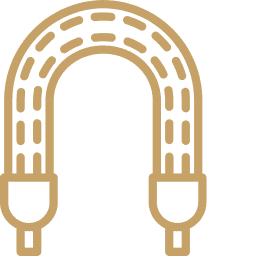
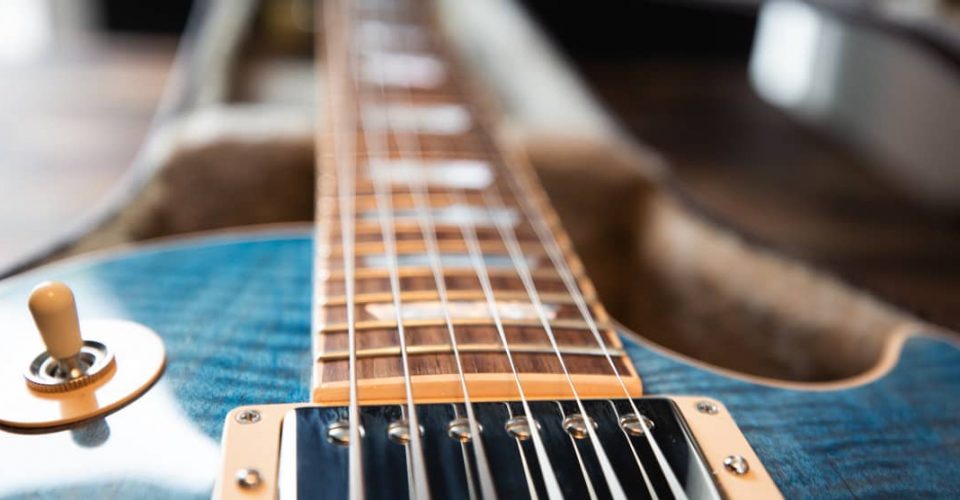


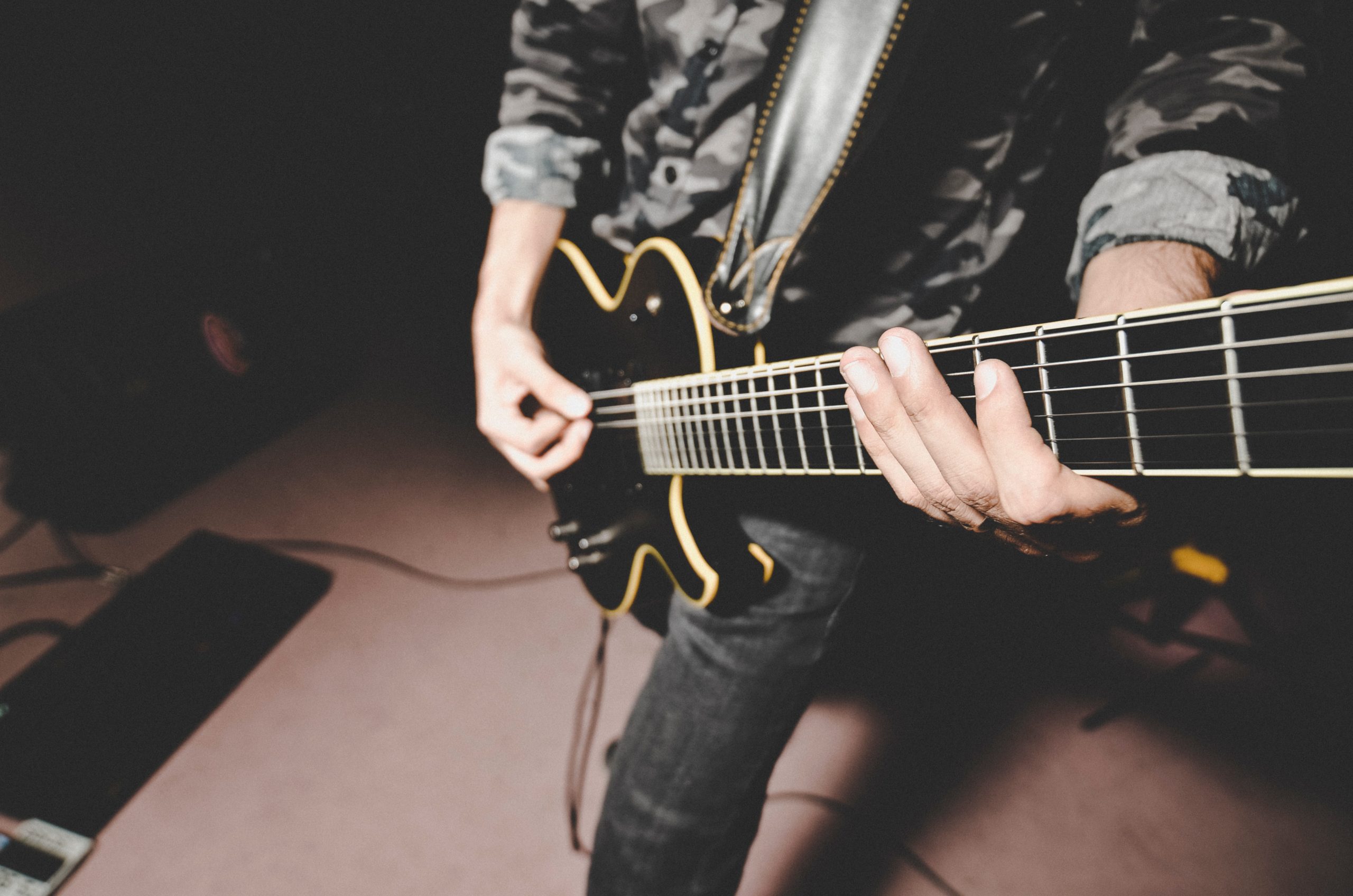
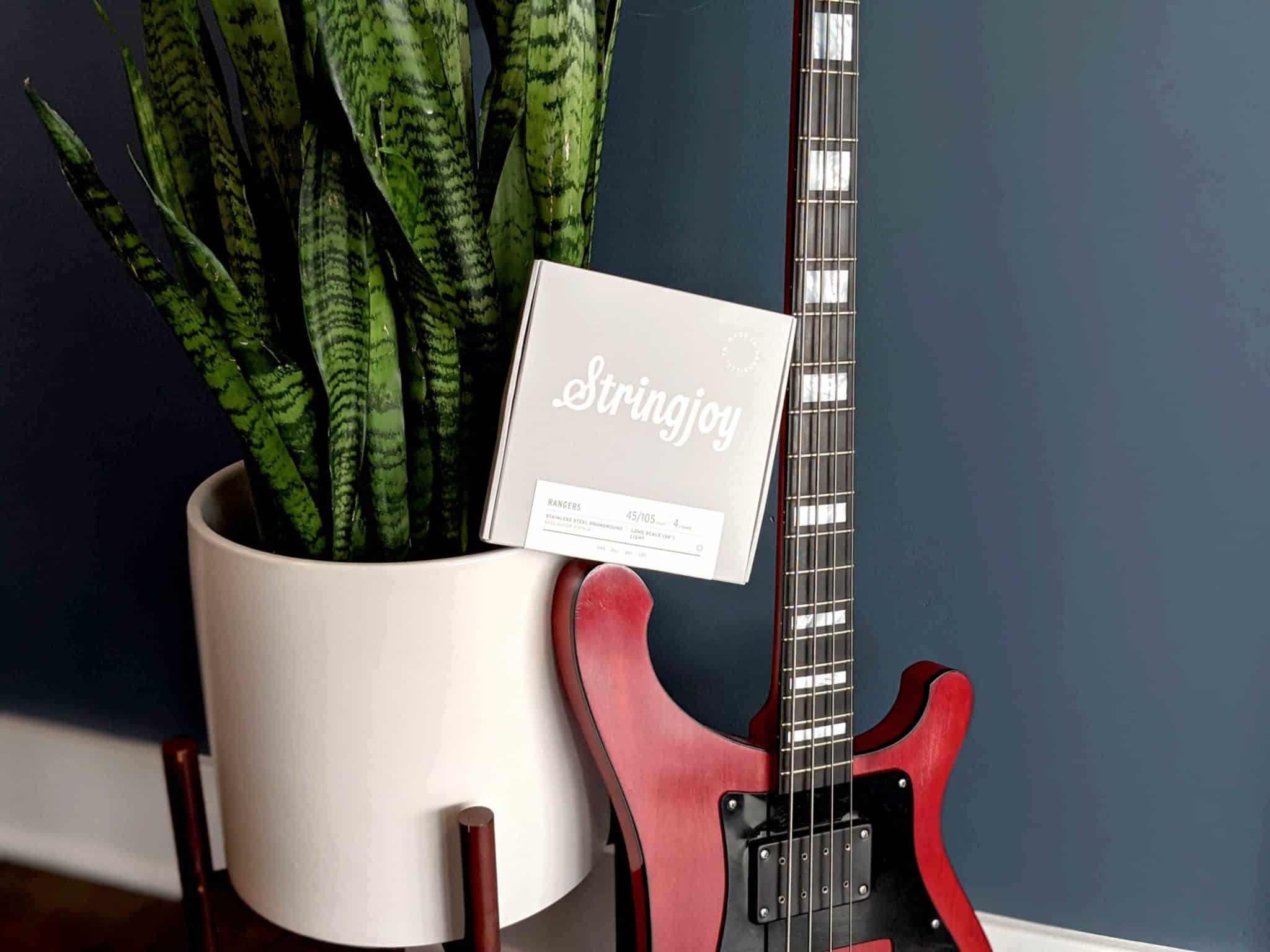

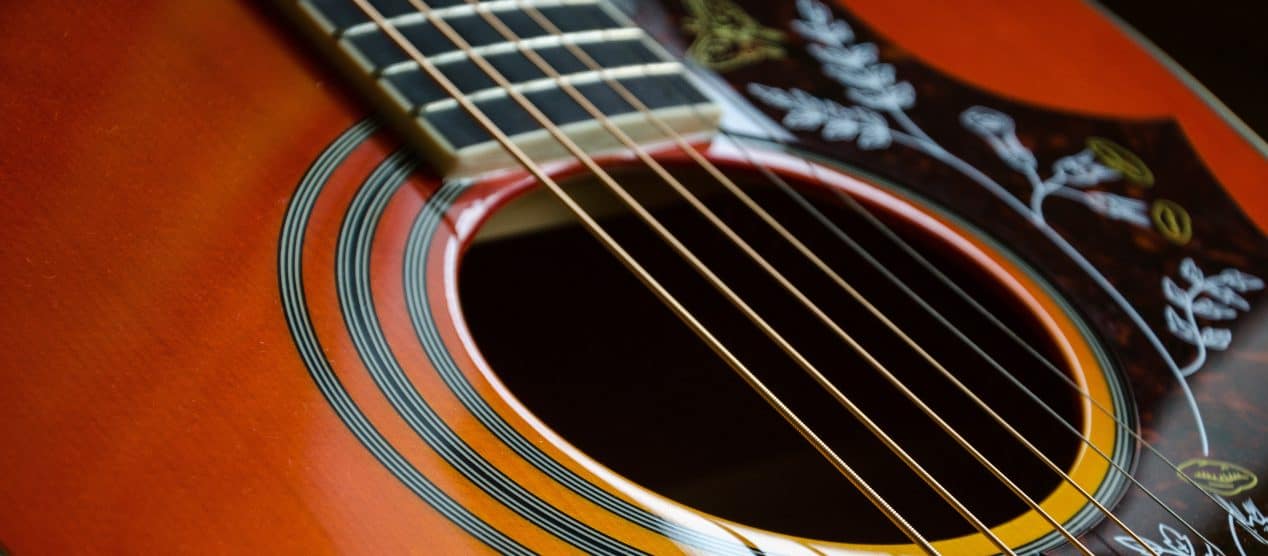
18 Responses
Even on my acoustic I like lighter strings. I prefer 8 or 8.5s. I like that I can customize with stringjoy.
I try to match the feel of string sets between different gage lengths.
I will use .0095/.046 on a 24.75″ scale length and.009/.046 on a 25.5
. This helps me with bending to pitch by having the same resistance to bending on different guitars in my herd
My 89 Strat Plus Deluxe has a metal nut. No way to get 11s on it. Itcan do 10s and below but thats it. I have seen people complain online but I’ve never used 11s on any of my electrics. 9s on tele and 10s on my Strat.
That’s absolutely right, string what works for you and that particular guitar. One thing I’ve noticed lately is E & B strings buzzing, pinging, whatever you want to call it, between the nut & the 3rd fret. I have found this to be the case on several brand new acoustics, even some electrics. Are the factories cutting the nuts differently now?
I got a Alvarez acoustic used that has 12-53 s on it. After a month with it , I’ve decided they are much too heavy. Talked to the store I got the guitar and two of their guys said no . It has to have 12-53. I love the guitar but gotta get it easier to play. Alot easier. Can I get away with 10s. ? Not much experience here. Asking for advice, please.
Use what you like for your guitar/style/sound/etc.
I use different gauges on different guitars
So 9-42, 10-46, 10-52, and 11-50
I’m thinking of trying a different gauge on the 10-52
All other guitars I have experimented with
Didn’t like 8s, and the guitar with 11-50 previously had 11-50 before going through other gauges and after many years, back to 11s
But use what you like and what makes sense to your context
I was using 9’s on my Jaguar’s because I had taken too long of a break from playing and my hands weren’t strong enough. I recently changed to 10’s which is my preferred string on almost everything except my acoustic which has 11’s. Just like you said it really comes down to preference as much as about anything. I do a lot of bending so I really don’t want to go any heavier on my electrics. I also am a fairly recent convert to Stringjoy strings and that’s where I plan on staying! Great article!
As a clean player I personally cannot go with anything lighter than an .011 on top and preferably a .012. Regardless of what Beato thinks, a clean guitar at any scale length with .008 or .009 on the high e, regardless of what you tune it to has a tinny flavor to it that can only be alleviated by a thicker gauge. My favorite set of strings I order special, .012, .015, .019, .032, .044, .056. As far as as scale goes I tune this to C# standard on my Jazzmaster/Telecaster (25.5), D standard on my PRS (25) and standard tuning on the Jaguar. On my archtop and semi hollow (24.75) I tune to standard. Clean, no boost or gain, a heavier string on the high e string is a must to get that big rounded, and not tinny sound. I personally cannot stand those lighter strings they sound like a banjo especially on a Telecaster. The thicker metal also resonates well with pickups. With Stringjoy the tension is really not that bad even tuned to standard. I love the versatility of this set though. Easy bending on the b and g and a full sound from the high e.
It’s a myth. It’s not the guitar that is made for 012 it’s rather the pickups. It’s only the pickup that matters to different gauges of strings. Not the electric guitar. On acoustic guitar it matters a great deal. But on electrics it’s only the pickup. If you change out to DiMarzios or later Seymour Duncan hotter pickups, you can put 009s on there and get the same output as vintage ones. It’s time to leave all that vintage crap/myths behind.
I experiment a lot before I settle with a type of string for a new guitar. The “feel” to me is the correlation between the strings gauge, your own strength, the neck length and radius, the action and the pick you use. I like to call this “the bounce”. Another thing that is important to me is to avoid my guitars to sound like strings. Especially acoustic guitars. There is a point where a string gauge reaches a threshold that brings out the maximum richness of the instrument. That is what I always aim for.
10-11’s on the Tele, 10-9.5’s on the LP, 9.5’s on the PRS Bernie Marsden , 10’s on the PRS 24 Custom. I’ve found those gauges good for me. It is just a matter of preference. Just up to the player.
I have an Epi Les Paul with Gibson Classic 57 pickups. Thinking about using 10.5’s
My philosophy, as a player and trained Luther goes like this.
Now. Keep in mind vintage pieces will have issues that may not be overcomable without serious modifications, but in general.
Any guitar that has a trus rod and settible intonation can be set up for just about any gauge or type of string.
The thing with acoustics and vintage hollow body jazz boxes is the lack of intonation adjustable bridges.
In the jazz hollow body (fat boy) guitar it has been designed to be strung with a string set that uses a wound 3rd. These guitars are usually set up with wooden, non tune o matic style bridges, and so are acoustic. Even with a compensated saddle and a sliding bridge. A plain G string on this bridge system will have intonation issues. In most cases. You could substitute a metal bridge with adjustable saddles to fix this, but a purist will never accept the sacrifice in traditional tone you get from a rosewoid or ebony bridge and will use a wound G. Most Jazz players don’t do much or any string bending so a wound G presents no problems, and this applies to traditional acoustics as well…but…since most acoustics have fixed bridges, it can only be expected to intonate properly within a very narrow variation within the manufactured recommendations. (They are telling you the type and gauge of string it was designed for which is their take on what’s best) so if you don’t want to play an acoustic that ships with 12’s and a wound G? Either start building those calluses…or buy another one that comes with 10’s and a plain G.
Or be prepared to lay down some serious dime for some not easy to perform modifications.
Even for vintage tune o matic, or vibrato bridges, it may be necessary to have the bridge re-set so the intonation can be set properly.
I can tell you from experience. I have had to reset plenty of vintage Les Paul’s and Strat bridges to use 10’s and almost always to go to 9’s.
I’ve personally done no less than 30 + 9 gauge setups on Strats where I has to remove the bridge screw in order to move the high E saddle forward enough to intonate properly.
So there is validity to the “made for” string gauge opinion.
Can any guitar use any gauge string? With the right tech, and a fist full of cash? Anything you want man…come pick it up next week.
On my Sheraton I like 10s. Especially the set of Stringjoy 10s I just put on. I know I can use about anything on a Sheraton but for me, 9s are too light (and I don’t do alot of bending), 11s a bit much and 10s seem just right. In this case I realize its all about my fingers my ear and my amp. By the way, I really like the idea that you set up these discussions. Thanks
One thing that wasn’t discussed is are some strings too heavy (i.e. to put too much tension on the bridge and/or neck) on some acoustics. For example, I have a 1935 Kalamazoo G2 that I have strung with extra lights to keep the tension on the neck at least 20 pounds or so, according to the string manufacturer.
A few years back I developed arthritis at the base of my left thumb. I always strung my electrics with .009s. As my condition worsened, I had to switch to .008s in order to bend without pain. After having surgery, I was unable to play for about eight months. Once I finished occupational therapy and got my full strength back, I stayed with the .008s. I had almost no intonation adjustments to make. I’m saving undue stress on the repaired joint, and the guitars feel and sound great.
I got 10s for my J Turser Telly style how do you feel about 9s on it these feel a little heavy and 10 on my J Turser strat style and the pevy
Nothing wrong with 9s on a Tele! That’s the way most of the Nashville cats string ’em up.